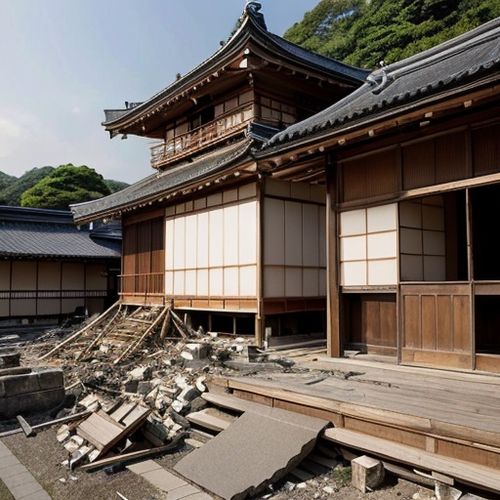The recent demolition of Japan's famed Washi Guesthouse has sent shockwaves through cultural preservation circles, reigniting urgent conversations about safeguarding intangible heritage in an era of rapid modernization. This iconic structure, built entirely with traditional washi paper techniques, stood for decades as a living testament to Japan's artisan traditions before falling victim to urban redevelopment. Its disappearance represents more than the loss of another historic building—it symbolizes the fragile existence of craft knowledge that has survived centuries but now faces extinction.
The washi paper tradition, recognized by UNESCO as Intangible Cultural Heritage, involves painstaking hand-processing of mulberry fibers to create exceptionally durable, translucent paper. For generations, these techniques were passed down through families in rural workshops across Japan. The Washi Guesthouse served as a rare urban showcase where visitors could experience this heritage firsthand—sleeping within paper-walled rooms, touching the distinctive textured surfaces, and understanding how such fragile materials could withstand decades of use.
Cultural economists point to a disturbing pattern emerging across Asia, where rapid urbanization prioritizes concrete efficiency over delicate craftsmanship. In Kyoto alone, over thirty traditional machiya townhouses disappear monthly. What makes the washi hostel's case particularly poignant is that it wasn't merely a container of heritage, but a functional demonstration of how ancient techniques could meet contemporary needs. Its paper walls provided natural insulation, diffused beautiful ambient light, and created acoustically gentle spaces—qualities increasingly valued in modern sustainable architecture.
Preservation efforts face complex challenges beyond simple neglect. Master washi artisans now average over seventy years old, with few young apprentices willing to endure the low pay and physically demanding work. Traditional mulberry fields are being converted for commercial crops, while synthetic alternatives flood the market. Perhaps most crucially, as buildings like the Washi Guesthouse vanish, people lose tangible reference points to understand why such craftsmanship matters. Unlike paintings in museums or dances on stages, architectural crafts require functional, inhabited spaces to truly showcase their value.
Some hopeful developments suggest alternative preservation paths. In the Japanese Alps, the small town of Mino has transformed abandoned paper mills into living museums where visitors make washi alongside masters. Tokyo's Paper Museum has pioneered augmented reality exhibits that reconstruct lost washi structures digitally. Most promisingly, architects like Shigeru Ban have demonstrated how traditional paper techniques can innovate modern disaster-relief shelters, creating new relevance for ancient knowledge. These approaches share a common thread—they treat craftsmanship not as frozen artifacts, but as evolving practices that must adapt to find contemporary purpose.
The emotional response to the Washi Guesthouse's demolition reveals deeper societal tensions. In interviews, former guests didn't merely mourn a building's loss, but the disappearance of certain sensory experiences—the way morning light glowed through paper screens, the particular sound of footsteps on paper-floored corridors. These intangible qualities resist easy documentation or digitization. Conservationists now argue we need new frameworks that protect not just physical techniques, but the full experiential ecosystems that give them meaning. This might involve stricter protections for remaining washi structures, subsidies for functional use in modern buildings, or even rethinking how zoning laws value cultural space versus commercial development.
As cities globally confront similar dilemmas—from Istanbul's vanishing Ottoman workshops to Mexico City's disappearing adobe traditions—the washi story offers sobering lessons. Technical preservation alone cannot sustain crafts; they require living contexts where people encounter their beauty and utility. The true memorial to the Washi Guesthouse may yet emerge if its loss sparks broader movement to protect not just artifacts, but the spaces where tradition breathes, adapts, and proves its enduring relevance to human life.

By Megan Clark/Apr 11, 2025

By John Smith/Apr 11, 2025

By James Moore/Apr 11, 2025

By Victoria Gonzalez/Apr 11, 2025

By John Smith/Apr 11, 2025

By Rebecca Stewart/Apr 11, 2025

By Megan Clark/Apr 11, 2025

By John Smith/Apr 11, 2025

By Ryan Martin/Apr 11, 2025

By Samuel Cooper/Apr 11, 2025

By Emily Johnson/Apr 11, 2025

By James Moore/Apr 11, 2025

By David Anderson/Apr 11, 2025

By Ryan Martin/Apr 11, 2025

By William Miller/Apr 11, 2025

By George Bailey/Apr 11, 2025

By Daniel Scott/Apr 11, 2025

By Sophia Lewis/Apr 11, 2025

By Megan Clark/Apr 11, 2025

By David Anderson/Apr 11, 2025